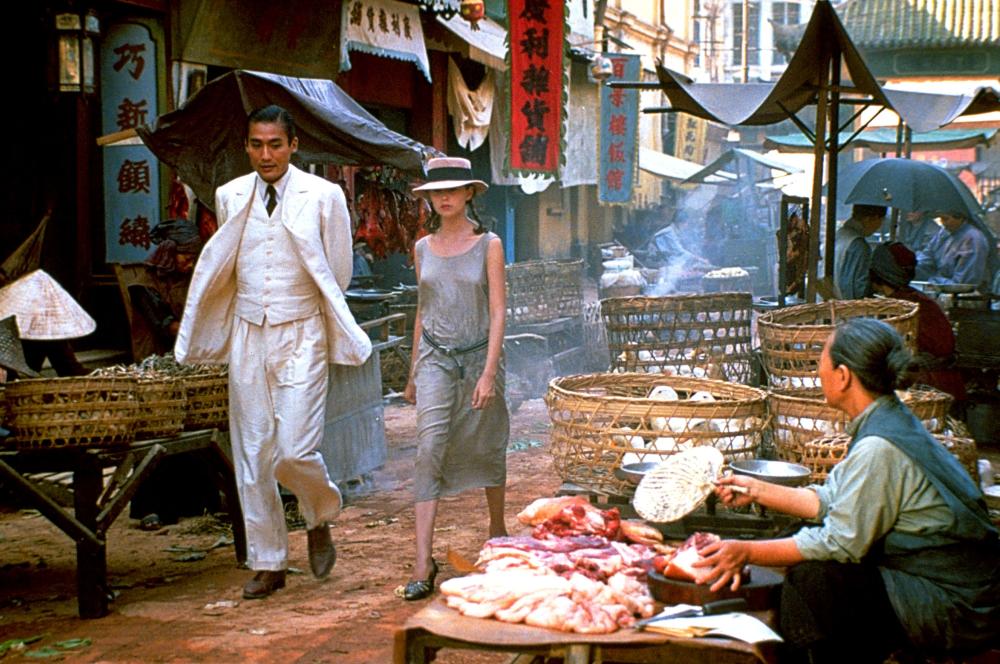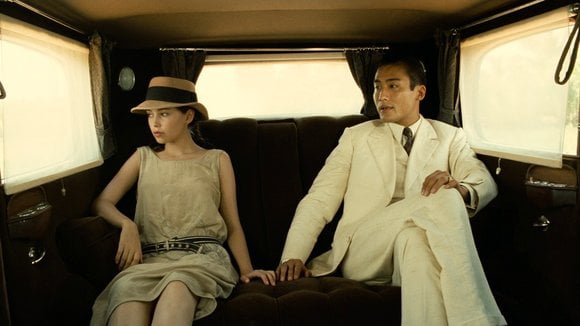Trigger warning: Rape, Abuse
The Lover (L’Amant) is a French drama film (bordering on the erotic), that engages the audience in a cinematic conversation on sexuality, race, and class in a French colony in Indochina. The film is based on French authoress Marguerite Duras‘ novel of the same name.
The Lover begins with a lamentation, one that alludes to the waning of beauty, not as a work of nature but circumstances and inability to keep up with the temporal pace. The narrator begins, “Very early in my life, it was already late…This ageing was brutal, this ageing I saw it spread over my features one by one…” The narrator compares her face to a book, and it is in creating this likeness, that the narrator extends the metaphor of the body as a text to be read and, to be consumed.

The Lover is based on the novel of the same name, and the novel reads as a supposedly autobiographical account of the authoress Marguerite Duras. Set in a French colony in Indochina, the film is narrated in retrospect by the protagonist who is given no name, and is only referred to as the ‘young girl’. Although French, the protagonist and her family comprising of her mother, an opium addict older brother, Pierre and a timid younger brother, Paulo have difficulties in making their ends meet. The family sustains itself through their French school for the local children, and evidently on their status as the colonial masters, however, ragged their condition be.
There is rarely a happy moment enjoyed by the family, their days punctuated by acts of violence committed by the tyrannous older brother, and the helplessness of the mother. The young girl meets the ‘Chinaman’ when she is just fifteen and a half years of age, and is crossing the river on a ferry to her boarding school at Saigon. She is gazed upon by the Chinaman who sits in his limousine, and for the same effect cinematographically, there are close shots of her body, her skin, her man’s hat, her dress, and her shoes which contain some remaining vestige of her former French grandeur. She is approached by the Chinaman, who is suavely dressed, but because he occupies a liminal space – he is not French, and neither is he a native. He is anxious about making any move, so much so that his hand trembles when he offers a cigarette to the young girl. It is this meeting that triggers the action in the film and forms the core of it – the Chinaman and the young girl embark upon a scandalous sexual affair – I refrain from using love because of the highly pronounced power relations between the two, an absence of genuine expression of vocal feeling by the young girl, and the presence of an obvious pursuit of carnal desires.
the film subverts the popular androcentric fantasies – the body of the Chinaman is eroticised as much as the Young Girl
The Lover gives much agency to the young girl – she is aware of the sexual power that she exudes, and she is ‘used to’ being seen by the people. The meeting with the Chinaman initiates her sexual awakening. A Freudian reading of this awakening and the series of events that it triggers can collectively be understood as the tussle between the pleasure principle and the reality principle, wherein by seeking the pleasure principle, the young woman overcomes the reality principle, and as a result endangers her position in the society.
Also read: No Female Agency In The Female Orgasm. Thanks Pop Culture!
The Lover potently brings to the fore the issues of class, race, and gender. Although the bodies of the lovers may clandestinely meet, they are aware that the social mores won’t allow them to be together forever, and it is in keeping up with these mores that they prefer to be away from the public eye. It is interesting to notice that the film subverts the popular androcentric fantasies – the body of the Chinaman is eroticised as much as the young girl’s (although her body grabs greater visual attention), the young girl is vested with authority over her body, there is a suggestion of reciprocity but only towards the end and, there is an undercurrent of homoerotic desire between the young girl and Helene, the other French boarder.
Looking into the French theories of desire, especially Jean Baudrillard’s works, where he defines play, challenges, duels, the strategy of appearances in terms of seduction, Baudrillard argues how women’s lives are constantly threatened by the phallic order, and that seduction represents mastery over the symbolic universe, while power represents only mastery of the real universe. Although this can be interpreted as Baudrillard advocating the roles of femme fatales and seductive temptress, he also notes that femininity too is nothing short of an artifice, an appearance, an illusion. Dovetailing Baudrillard’s theory with French cultural theorist, Georges Bataille who states that the erotic conduct is opposite of normal conduct, and erotic excess implies disorder; the film hammers home this point brilliantly. In the absence of a father, the young girl and her mother are somewhat controlled by the older brother, Pierre. It is Pierre who later calls her a whore, a slut and bashes up her up. Moreover, he even leers at her when she comes home from her boarding. The Chinaman too is a victim of the patriarchal order – he eventually has to bow down to his father’s wishes and marries a rich Chinese heiress.
Themes of honour and shame are conspicuous in the film. The regulation of female sexuality and their bodies is criticised by Helene who wishes to be a prostitute than dedicate her life in the service of lepers. The young girl transgresses to the temptation of the flesh – and she wishes that the Chinaman does to her body what he does to all other women.
femininity too is nothing short of an artifice, an appearance, an illusion.
However, the exploration of sexuality is fraught with many problems – the young girl constantly rebukes the Chinaman for being Chinese, and he retorts likewise by telling her that since she has been deflowered by him, she is no longer a virgin, no longer a respectable girl, that no one will marry her and marriage between the two is out of question. The young girl does not flinch at all.
When their rendezvous becomes public knowledge, the young girl is ostracised by her peers at school. The young girl, however, is very guarded about her feelings for the Chinaman, calling him a ‘friend’ throughout, only to realise her love for him when she leaves permanently for France, away from the spatial zone that bears witness to her forbidden affair.
The Lover poignantly brings out the anxieties of the characters quite efficiently. The Chinaman tries to forget his love for the young girl by asking her to repeat that she came to him for the sake of his money, the young girl’s family cannot accept her Chinese lover but they also cannot let go of him because of his immense wealth, Helene can never explicitly express her love and desire for the young girl, and the young girl is never too willing to give a name to her relationship with the Chinaman.
One scene that particularly stands out in the film is when the Chinaman forces himself upon the young girl as an act of self-aggrandisement – he has been humiliated by her family, and he has witnessed a very intimate dance between the young girl and her younger brother. The female body becomes a site of claiming and projecting power – the power of sex translated to a power of conquest.
Also read: 5 Movies That Started A Conversation Around Positive Sexuality
Although the film departs from the androcentric fantasies as already discussed, one major disappointment of the film is the relegation of the natives to the background. They are muted – the colonial subjects, their troubles and their anxieties blurred.
With brilliant cinematography, costume design, and editing, this film is one of Annaud’s gems.
Featured Image Source: Cinema Montreal
About the author(s)
Sonakshi is currently pursuing her post graduation in English from Delhi University. A keen flaneur, she loves to read, and takes a keen interest in art and culture. She hopes to conquer world literature, and be a writer one day.




